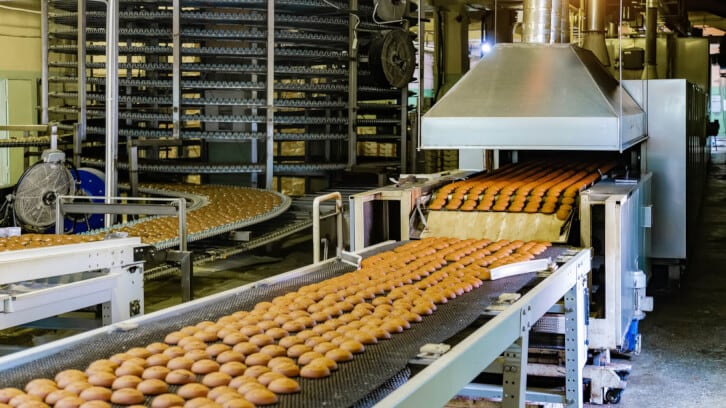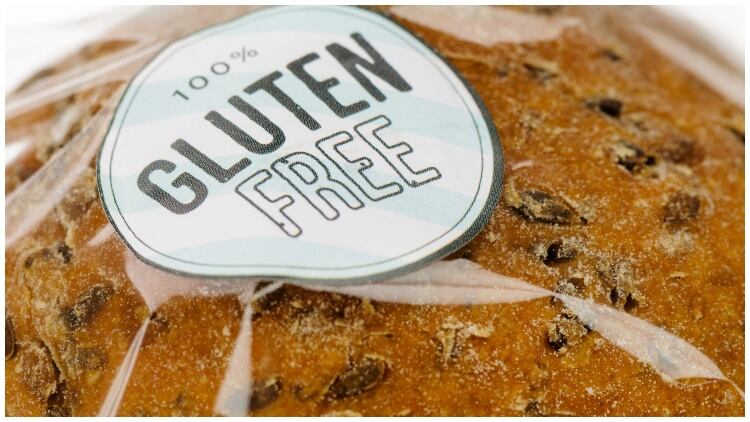Food fraud can be dated back to Babylonian times, wherein the penalty for being caught in such activities was death.
It is an economically motivated activity, bringing financial gain to the perpetrator while disadvantaging legitimate manufacturers/retailers and delivering a sub-standard product to the consumer. This can lead to unfair competition and multiple production issues, resulting in potential loss of contracts and the introduction of health risks to consumers. Those committing food fraud often undercut market prices to drive their sales, therefore legitimate manufacturers need a mechanism to even the playing field to ensure that only genuine players can compete.
Paper trails and audits alone are not enough to guarantee authenticity. Testing, in particular rapid testing, helps support better quality control and auditing. Grey areas in the current controls can allow for accidental and/or deliberate mislabelling along food supply chains. Having appropriate checks in place gives manufacturers, retailers and consumers greater confidence in their produce and allows non-compliant produce to be identified and withdrawn rapidly, saving money, providing safety and quality assurance, and reducing the risk of reputational harm.
Bia Analytical Ltd. is a UK method development and testing laboratory set up to address problems in the field of food safety, quality and authenticity. We have developed industry-leading, cutting-edge methods to detect substitution or food adulteration across the supply chain. Our focus to date is on developing methods to detect adulteration in high-value or high-volume commodities such as flour, herbs, spices, oils and rice etc., that can help protect the food supply chain against food fraud and offer reassurance that products have been tested with the best food fraud detection methods possible.
Europe’s breadbasket and wheat fraud
The ongoing conflict in Ukraine – considered the breadbasket of Europe – is particularly worrying as Ukraine is among the top three wheat exporters in the world. Approximately 32m hectares of land is said to be cultivated each year, supplying a quarter of the world’s wheat production.
The impact of Russia’s invasion of Ukraine and the recent exit from a united nations (UN) backed accord to guarantee safe passage of grain ships crossing the black sea is a catastrophic event that could lead to reduced grain availability causing escalating food prices around the world. In commodities such as flour, this increases the risk of economically motivated food fraud.
An international crisis such as this is a particularly inviting opportunity for rogue traders. Soaring prices and the scarcity of goods is a breeding ground for economically motivated adulteration, taking advantage of vulnerable markets. A robust testing approach, running alongside your traceability checks, is therefore needed to ensure that you are protected from emerging fraudulent activities, which could hit the wheat/flour industry in the form of misleading information on country of origin, the bulking out of flour, and the deliberate mislabelling of heritage products.
Common wheat flour, for example, also known as bread wheat flour, is produced from a cultivated wheat species that makes up around 95% of wheat produced worldwide. It is the most widely grown of all crops and the cereal with the highest monetary yield, leaving it products vulnerable to economically motivated adulteration. The popularity of common wheat flour in food production has seen it displacing many of the other wheat, barley and rye species that were once commonly used for bread making, particularly in Europe. With the current geopolitical and climactic situation, wheat flour stood out in our vulnerability assessments as a commodity to be aware of, so we started on a body of work to develop methods to address several areas of concern.
Lab solutions to mitigate against food fraud
Spectroscopy and chemometrics are the underpinning technologies used in many of our methods. The technique is rapid, meaning we can offer a three-day turnaround on sample analysis empowering clients to make decisions faster.
Spectroscopy is used to gather sample data, or what we call ‘fingerprints’, by measuring a sample’s interaction with certain light wavelengths. These fingerprints can be unique, making it a useful analytical platform for food screening because it is quick and non-destructive.
But spectroscopic data alone don’t necessarily reveal anomalies. Differences can be very subtle and difficult to visually interpret, especially when comparing hundreds of samples. However, when coupled with chemometric modelling it can be powerful tool in the fight against fraud.
Chemometrics is used to compare and ‘sort’ the data produced by spectroscopy and create models that partitions materials into unique classification groups. This allows us to predict results for unknown samples.
Authenticity testing can be performed using several techniques. The verification of grain authenticity can be achieved visually by comparing physical features/morphology. However, as material is processed into flour this ability to distinguish visually is lost, and also opens up the opportunity to add bulking agents or alternative species which now look similar in the ground form.
A plethora of wet chemistry tests could be performed to assess protein, oil, mineral concentrations etc., but this approach would require multiple analysis using several machines, taking days to complete and interpret. Moreover, it may not be possible to distinguish between different wheat varieties or country of origin.
Targeted testing, such as looking for specific adulterants, could be performed, but these tests would only detect the substances you have specified. So while fraudulent practices evolve to beat the test, the methods will become obsolete or many more tests will need to be undertaken.
DNA techniques could be used to distinguish between varieties, but as flour has undergone harsh treatment in the grinding process, DNA can become damaged. Therefore, the potential for errors in the method is increased. In addition, the technique will not be able to identify country of origin, nor the presence of non-DNA containing bulking agents such as chalk/talc.
Bia Analytical’s approach to wheat flour authenticity
We address the problem in a non-targeted way, meaning that we map what authentic looks like, giving us the ability to detect unknown adulterants as differences from the authentic population. As we build more models addressing different testing questions, we will then be able to answer multiple quality/authenticity questions from a single analysis.
To address the growing vulnerability of wheat flour adulteration, Bia Analytical have worked with numerous trusted partners to understand and address industry-wide concerns by firstly developing an authenticity test for common wheat flour specifically focused on detecting bulking agents.

The method has been developed for both white and wholemeal flour on FTIR to detect adulteration of wheat flours, including Groups 1 to 4, and Canadian Western Red Spring (CWRS). The test has been validated to detect many common bulking agents/adulterants such as talc, chalk, rice flour, cornflour and other starch products at levels that would indicate economically motivated adulteration.
By working with several trusted industry partners, we were able to source materials and develop our methods by collecting and analysing hundreds of known authentic samples to model what the genuine product should look like. We also sourced and analysed the potential adulterants, therefore creating and validating models that can differentiate between authentic and adulterated flour. The validation process is very important because it allows us to assess the robustness of the method.
Now that the first flour method has been developed and validated, we can test your samples. An ‘authentic’ result indicates that the sample fits within the authentic flour cluster in our model. A ‘non-compliant’ result signals that a sample does not match that authentic flour cluster and should be further investigated.
Our technique introduces a new instrument to the market that can be employed to support current traceability and quality systems as a complementary tool, both to support current testing and provide additional information and checks for food manufacturers and retailers. To allow for quick decisions to be made, our service provides a rapid, untargeted approach with a three-day turnaround, helping to build consumer confidence and better protecting the interests of manufacturers, producers and retailers.
The future of lab testing
At Bia Analytical we are constantly looking to the future to stay ahead of the curve and outthink rogue traders. We have recently partnered with trinamiX GmbH, a leading developer of cutting-edge biometric and mobile NIR spectroscopy solutions. This partnership will see us transfer our lab-based spectroscopy methods, including our flour methods, onto their portable platform therefore developing a ground-breaking new solution that will offer customers a rapid portable authenticity result at the point of sampling. This game-changing new solution will provide another tool for businesses to strengthen their authenticity testing, taking testing out of the lab and into the supply chain.
There are many contributing factors that will ultimately drive economically motivated food fraud, but a strong, robust and reactive testing regime working alongside traceability systems will always be your best approach to keep a step ahead of criminals.
At Bia Analytical we can work with you or your contracted lab to provide a complementary testing approach to enhance the effectiveness of your overall quality control and risk management processes and help to minimise the risk of adulteration and potential quality issues for consumers.
This lab-based common wheat flour adulteration test is the first step on our path to develop useful tools for the grain/flour supply chain. We have many plans in development to help address other concerns and would welcome your input.
We are already working on rapid methods to differentiate between, and identify adulteration/substitution of, durum wheat flour, conventional wheat flour and flour made from heritage grains. Future work includes developing methods to verify country of origin claims and the really exciting part will be the transfer of all our tests from lab-based solutions to portable tests, enabling non-scientist to perform analysis.
If you found this feature useful, you may also enjoy NatWest's head of manufacturing and construction's analysis on global supply chain fluxes and security.




